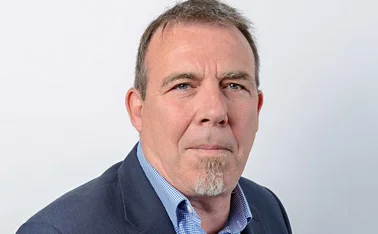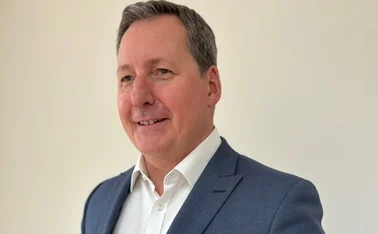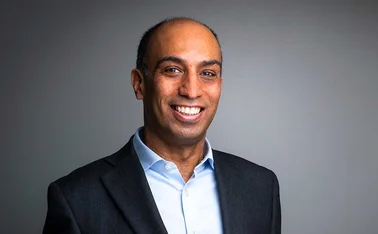
Broking success: Gem of a broker
Managing director of TH March Neil McFarlane explains how the specialist jewellery broker is looking to grow and keep the personal touch with clients
▶ When and how was TH March set up?
It was set up in 1887. Tommy March was the son of a Hatton Garden diamond dealer and at the time he realised that diamond dealers in the area didn’t have adequate insurance cover. He had a friend at Lloyd’s called Cuthbert Heath who went on to found CE Heath and became quite famous. Between them they wrote the first jewellers’ block policy which is universally adopted now globally, not just in the UK. It’s the standard form for jewellers’ block cover – a fancy name for a commercial combined policy for jewellers – worldwide.
 ▶ Have you always worked for the business?
▶ Have you always worked for the business?
I’ve been with TH March 32 years. Before that I did a little one year stint with Cornhill as a motor underwriter. My mother worked for General Accident back in the day, which shared a building with TH March. I actually worked with TH March when I was with Cornhill. A job came up for a general commercial account handler just as I was realising motor wasn’t my forte. That’s where the story began and I gradually worked my way up through the different areas of the business. I came to London 17 years ago. We like to promote from within, it’s one of our philosophies.
▶ What business lines do you cover?
In addition to the main jewellers’ block cover we have a thriving commercial operations based down in the south west at the Plymouth office. That’s been growing healthily over the last few years. We also have a household and high net worth team, which again has been expanding nicely with double digit growth. And we have a team that work with schemes who specifically work with jewellers. We also launched a financial planning business a couple of years ago to give pension and wealth investment advice.
There are natural synergies with the high net worth (HNW) sector. We view our jewellery clients as much as partners. We have got clients that have schedules running into millions of pounds.

▶ The recent Hatton Garden heist made a lot of headlines – were any of your clients affected?
Yes, indeed they were. There was a lot of misinformation about how insurers were looking to deal with the loss and we decided we needed to take charge. We had a loss, which was a six figure sum, which we settled in 18 days working with the underwriter and loss adjuster. We think that was pretty good going. Overall, we had quite a few clients involved and thankfully all of our claims were settled, apart from one where most of the stuff was recovered and the client was still deciding whether or not to claim.
It did have an impact but our aim is to look after the customer, deal with the claims and get them back on their feet again.
 ▶ How do you help your clients when something like that occurs?
▶ How do you help your clients when something like that occurs?
The first thing to do is make sure the cover is structured properly. Is a client 100% happy with every claim? Of course not. But by and large, if a sizeable loss comes in like a vault break in or an armed robbery, the account manager will call the clients to see if they need help. A lot of them turn up anyway on spec to make sure the client is okay. It’s that very personal relationship that we always adhere to, even in the days of massive technology leaps. It’s that personal touch and relationship that we think any broker has to do. We’ve been doing it for a long time and I think we do it pretty well. Any help they need on a claim is all part and parcel of the service.
▶ How important is personal service in jewellery insurance beyond claims?
Very important. We have invested time and money into getting a full customer experience platform. We partnered with Oracle for a CRM (customer relationship management) system with automated marketing. We’ve also got a social relationship management system which gives us a real 360 degree view of our clients, our touchpoints, and how they contact us. Insurance has traditionally been a transaction. I went to a conference last year and it became more obvious that sometimes you feel a bit like Dick Turpin calling them up once a year and demanding money. It’s not a friendly or personable relationship. It’s about how you can engage with them. We are spending a lot of time and effort at the moment trying to get that right. The key thing is to engage with them, not just communicate. We have to make sure it isn’t too salesy because they will just disengage or unsubscribe. A lot of it has to be email because that’s the cheapest way, but we can also do Facebook, Twitter, LinkedIn and Google+. We need to have a presence there.
▶ Which insurers do you work with?
We deal with quite a few Lloyd’s underwriters and to be fair all the major players in the company market – RSA, Aviva, Axa, AIG – the big guys. We don’t tend to deal with unrated insurers, I am sure there is a place for them, but we have always been very conservative in terms of the insurers we deal with. We will look at new insurers because there are sometimes innovations but they have to have a sound financial rating.
▶ Tell us more about the TV documentary you were in…
In 2008/9 we started an antique crime initiative called SaferGems with a trade association partner. This co-ordinates crime information across all of the UK and deals with every UK police force. The biggest problem with jewellery crime is the crime doesn’t stay within a county or region but generally the police response does. SaferGems overcomes this and deals with Interpol in Europe and also works in the States. They have a good presence and profile. When the BBC approached them to talk about [the issues around] dodgy claims then they in turn recommended us.
▶ The most recent results saw profits rising at TH March – what drove that?
Last year was a good one and we think this year will be even better. We are quite bullish as a board of directors and we think we have the building blocks in place to drive the business forward. We’re a close knit management team and we’re pulling in the same direction.
▶ How do you plan to grow?
There are no plans to launch in new areas. We launched financial planning in October 2013 so that is still in its infancy but again it’s starting to get momentum, which is what we hoped for. We still have loads to do in our existing lines of business. We’re always looking for new schemes that are a natural fit with what we do already.
With B2C we want to harness the user experience platforms we put in place and create more engagement. We want to keep the traditional service element but embrace new technology.
We’re looking for modest growth. We look as to what we can do to improve our customer service and then the numbers will take care of themselves.
The key for us is we want to grow all lines of business with a heavy emphasises on jewellers’ block, which is a very mature marketplace for us. It’s competitive and we’ll look to add value and are looking at ways to engage all clients irrespective of size to become their trusted adviser – that’s the golden goose for insurance brokers.
Only users who have a paid subscription or are part of a corporate subscription are able to print or copy content.
To access these options, along with all other subscription benefits, please contact info@insuranceage.co.uk.
You are currently unable to print this content. Please contact info@insuranceage.co.uk to find out more.
You are currently unable to copy this content. Please contact info@insuranceage.co.uk to find out more.
Copyright Infopro Digital Limited. All rights reserved.
As outlined in our terms and conditions, https://www.infopro-digital.com/terms-and-conditions/subscriptions/ (point 2.4), printing is limited to a single copy.
If you would like to purchase additional rights please email info@insuranceage.co.uk
Copyright Infopro Digital Limited. All rights reserved.
You may share this content using our article tools. As outlined in our terms and conditions, https://www.infopro-digital.com/terms-and-conditions/subscriptions/ (clause 2.4), an Authorised User may only make one copy of the materials for their own personal use. You must also comply with the restrictions in clause 2.5.
If you would like to purchase additional rights please email info@insuranceage.co.uk








